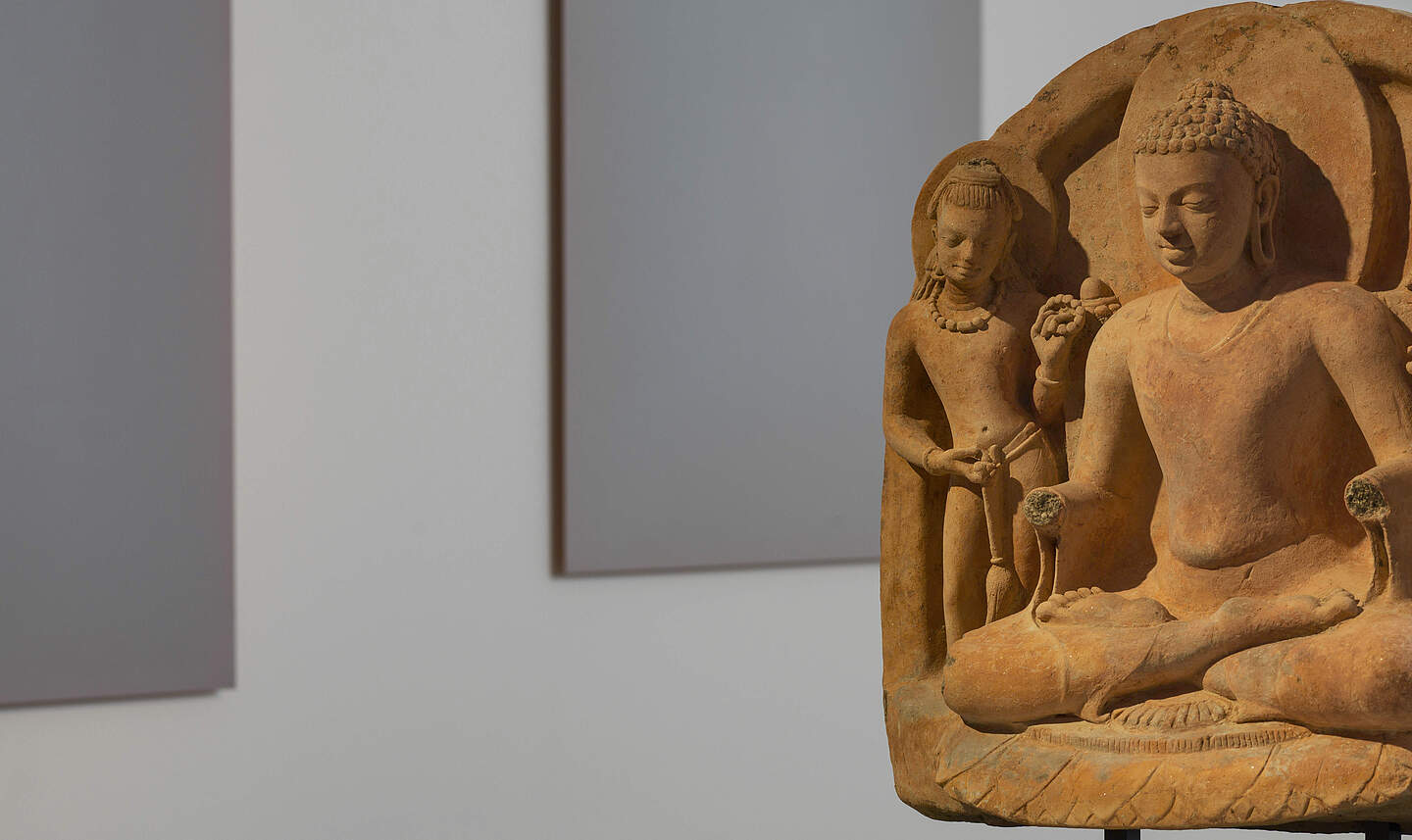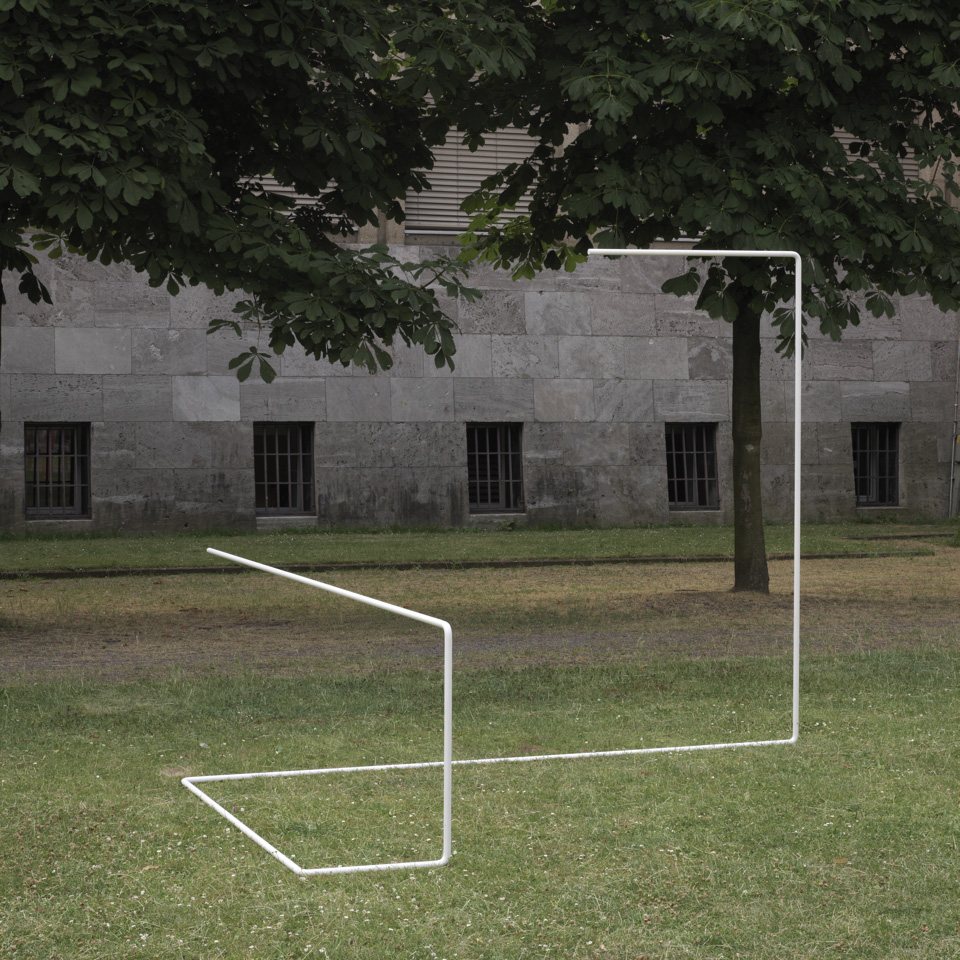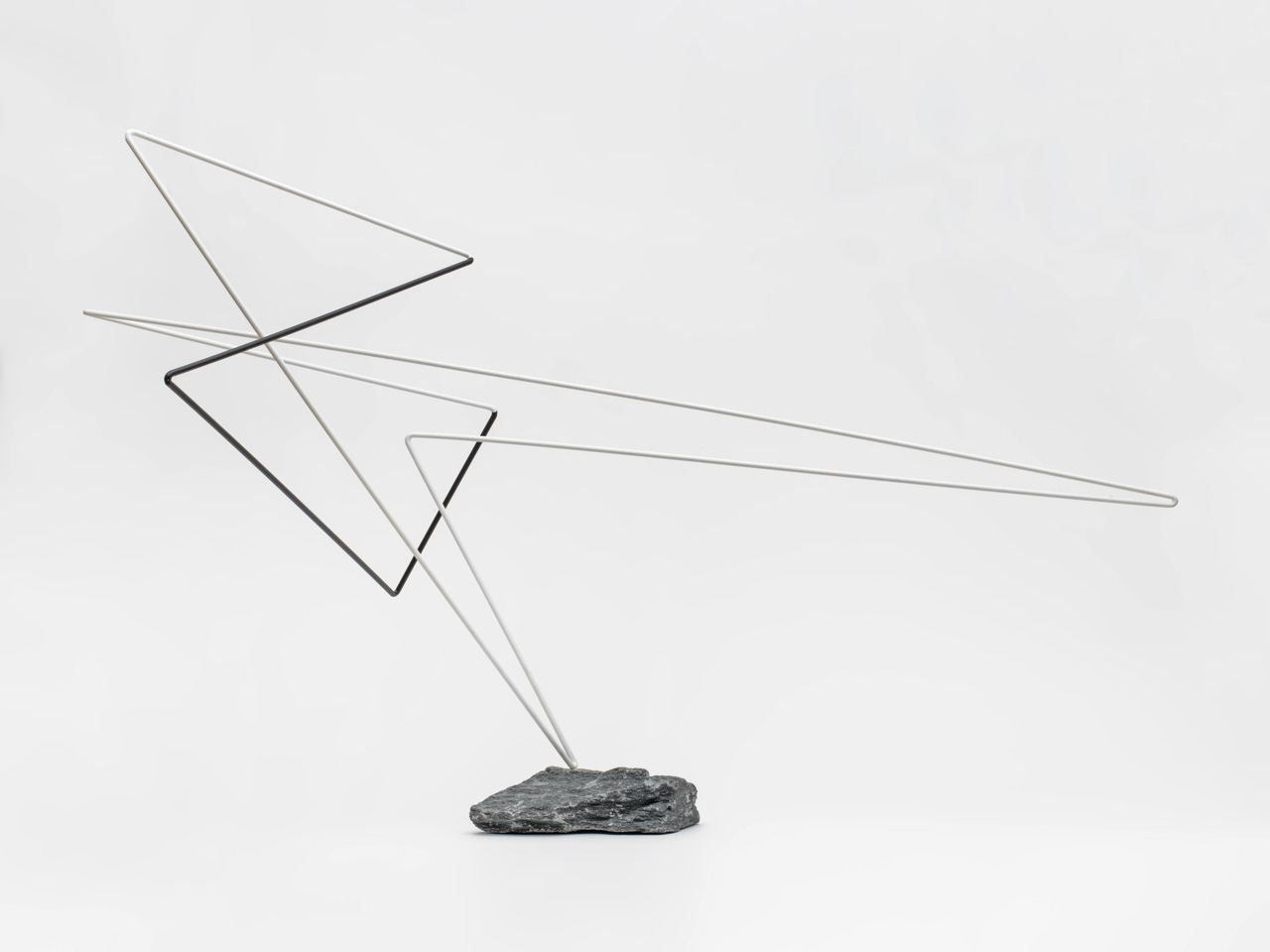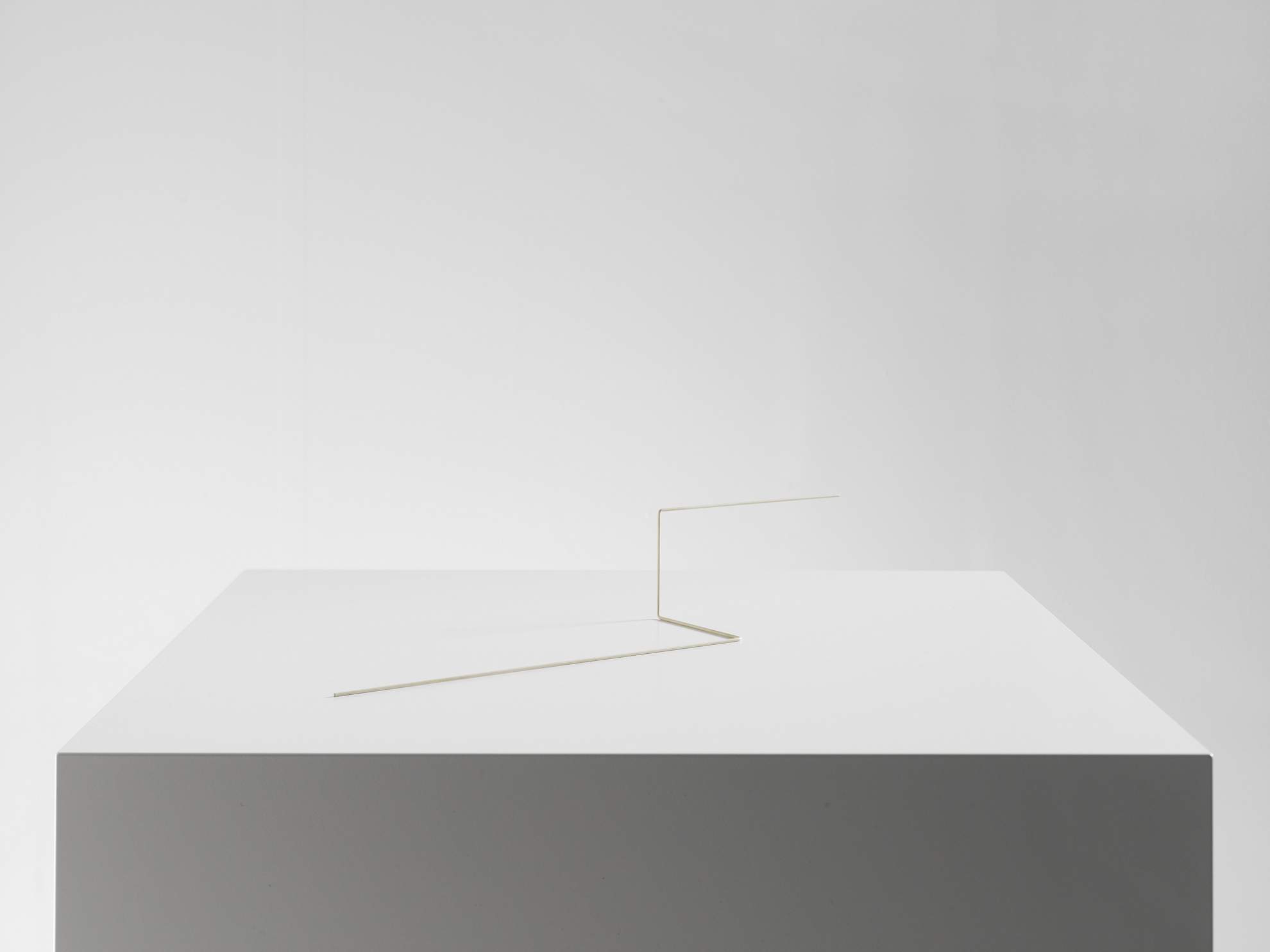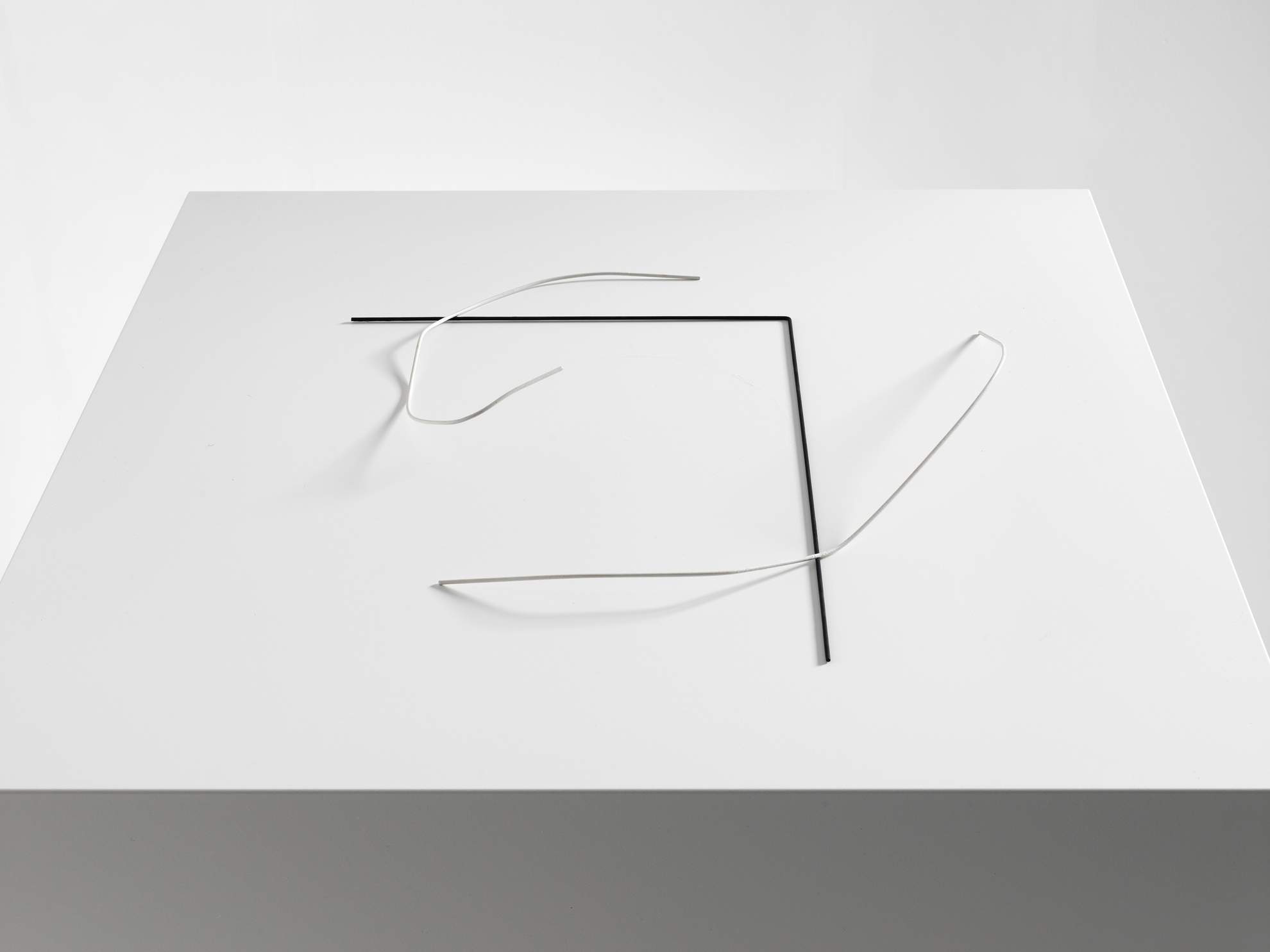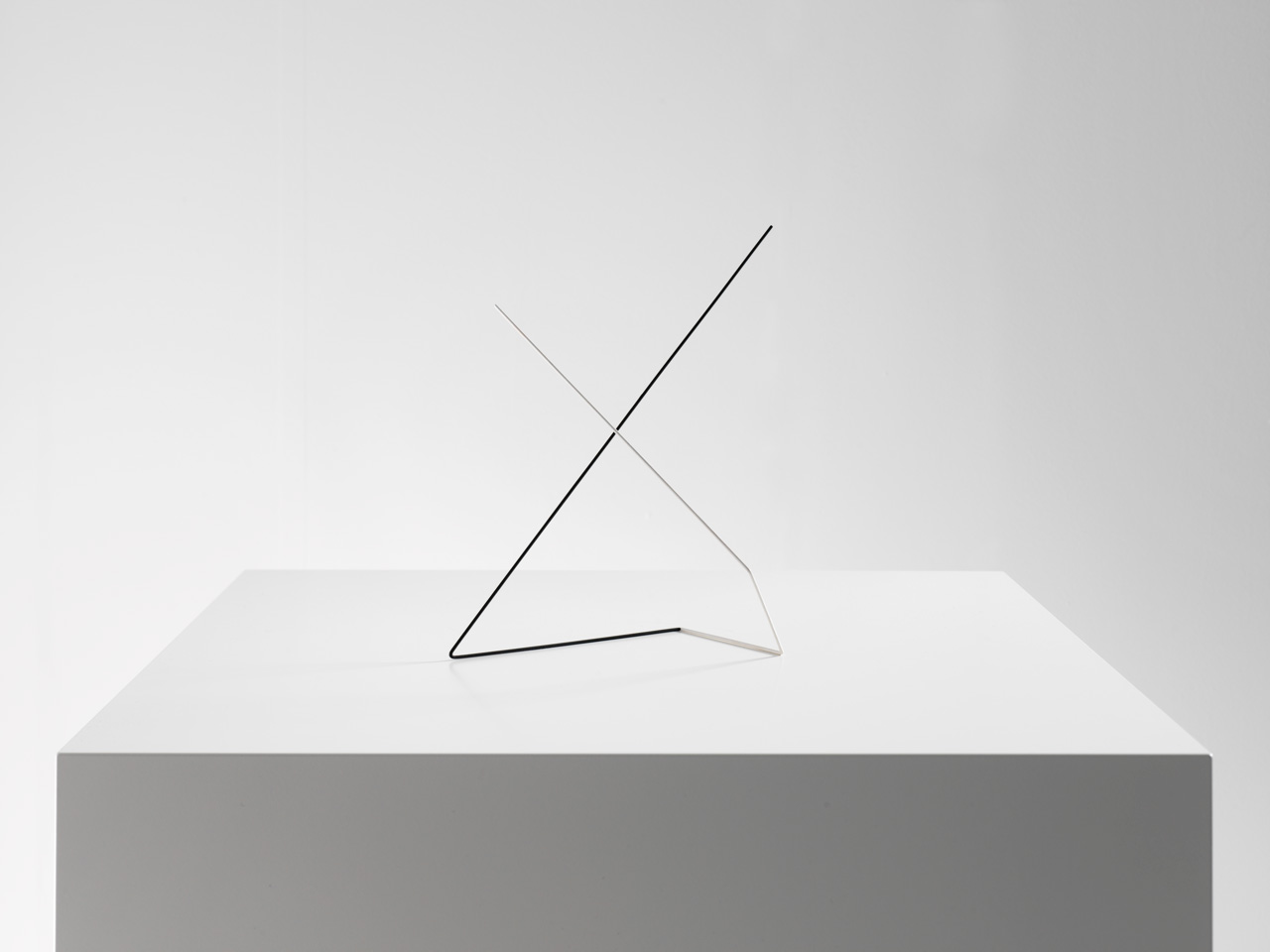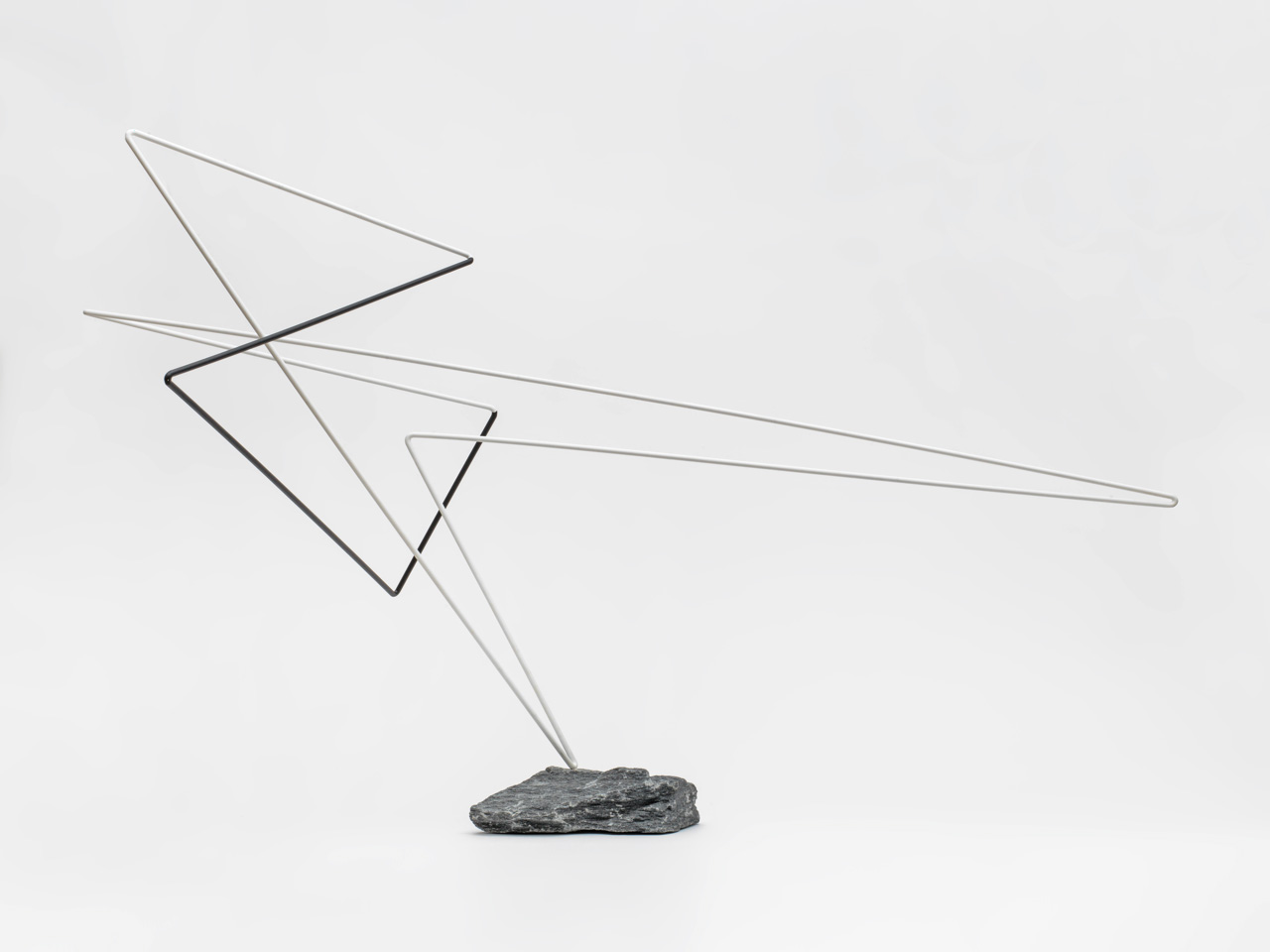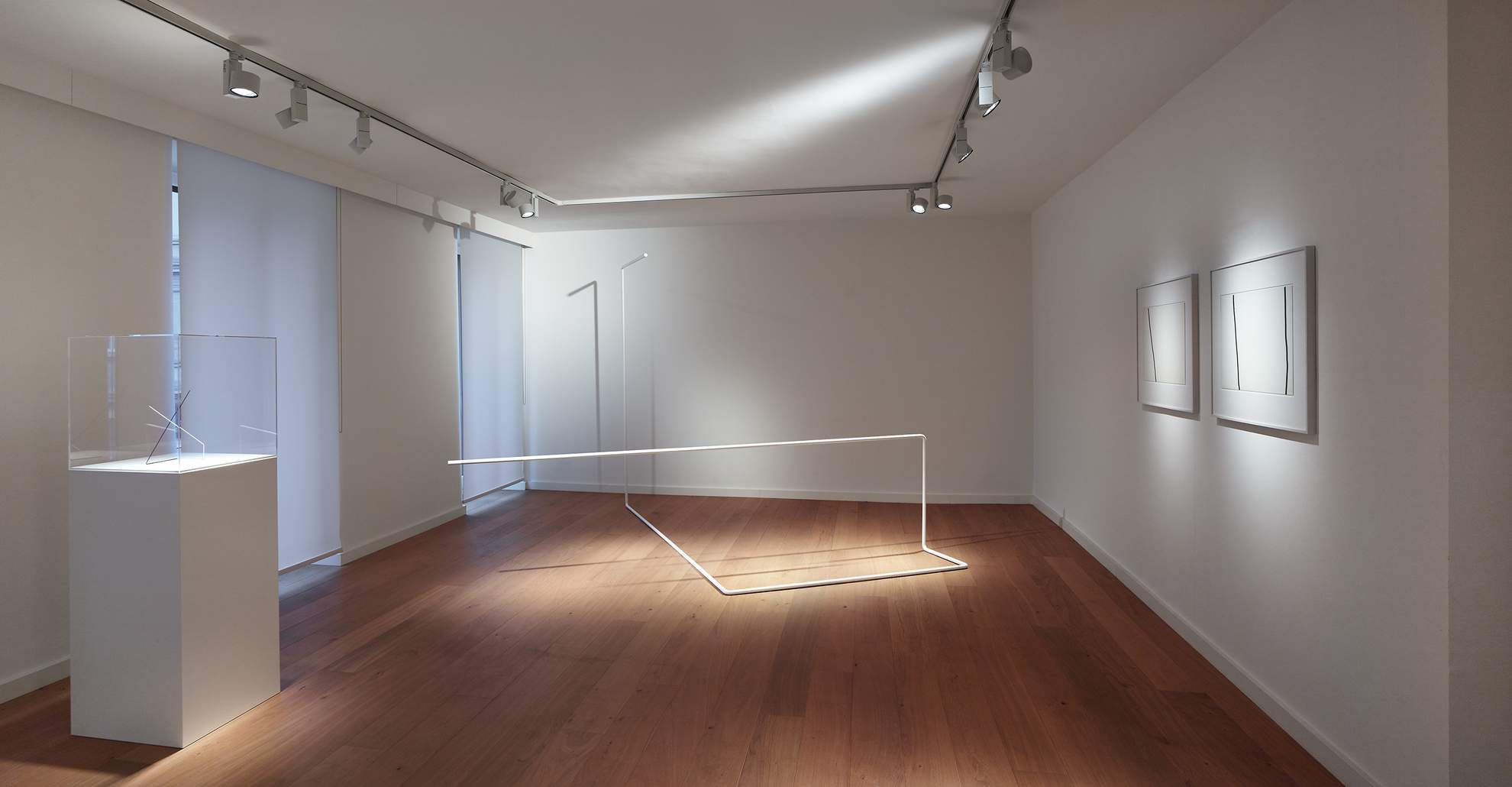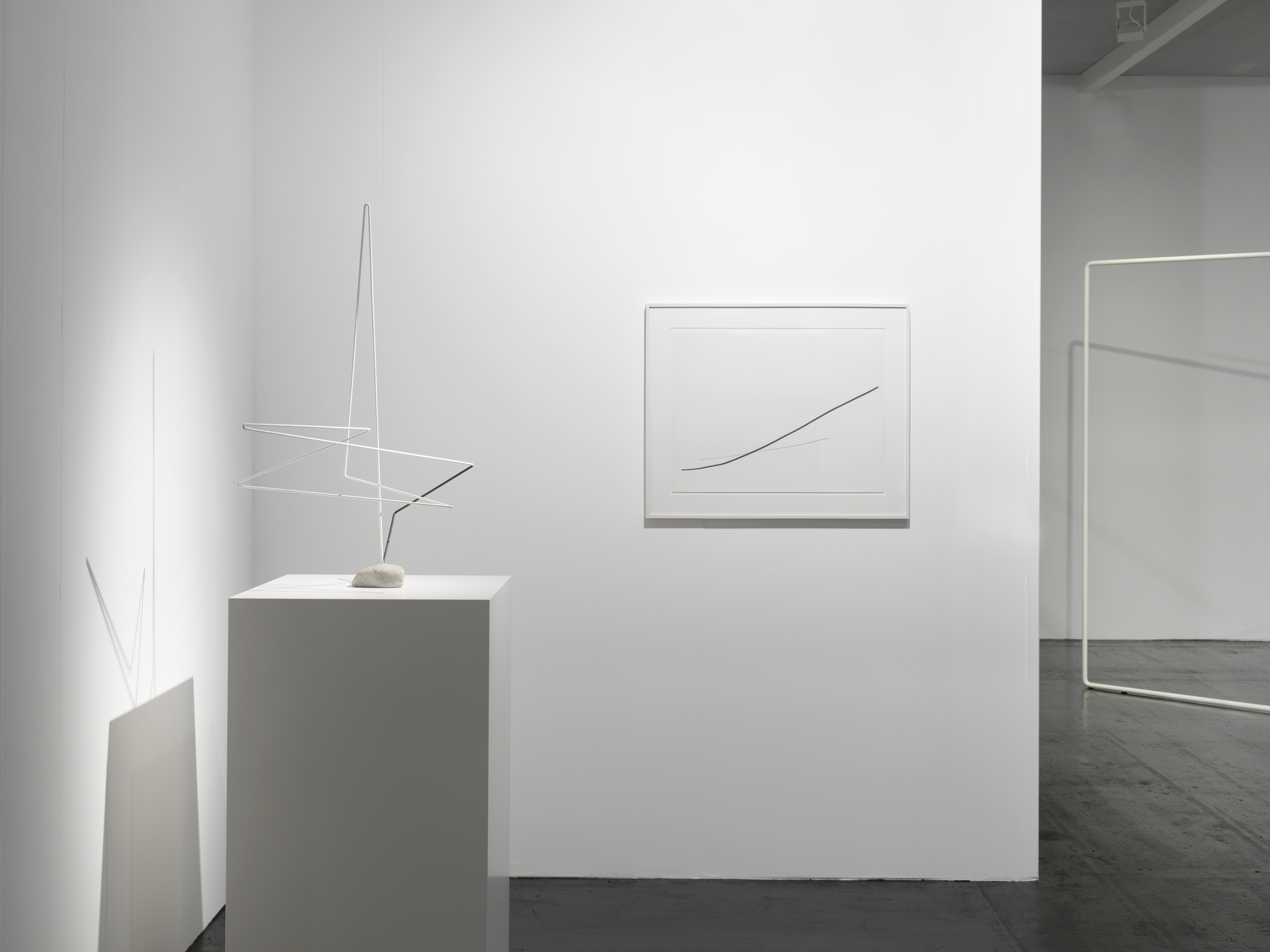
Norbert Kricke
Biography
Born on the 30th of November 1922 in Dusseldorf, Norbert Kricke may be counted among the most important sculptors of German post-war art. In 1935 he moves to Berlin. Around 1941 and 1942 he makes first experiences with sculpture and between 1946 and 1947 he studies at the Hochschule für Bildende Künste in Berlin under Richard Scheibe. In 1947 he moves again to Dusseldorf working as a freelance sculptor. He marries Hertha Schottky. In 1949 the first Raumplastiken arise. His first solo-show at the Galerie Ophir in Munich takes place in 1953. In the following year (1954) he stays in England and Scotland as a guest of the British Council. In the same year he meets Carola Giedion-Welcker and Sigfried Giedion in Zurich. In 1955 he develops the Wasserformen and in 1956 he writes the exposé Forms of Water in collaboration with John Anthony Thwaites. Furthermore he creates the first Flächenbahnen. In 1958 he receives the prize of the Graham Foundation for Advanced Studies in Fine Arts in Chicago. In 1959 collaborates with Walter Gropius for the new university building in Bagdad. He travels to Mexico and in 1963 he is honoured with the great artprize from the Land North Rhine-Westfalia for sculpture.In 1964 he is awarded the professorship in sculpture at the Staatliche Kunstakademie in Dusseldorf. Then 1971 he receives the Wilhelm-Lehmbruck-Prize from the city of Duisburg. In 1972 he stays in Egypt. During his period as the Rector of the Kunstakademie Dusseldorf from 1972 to 1981, Norbert Kricke was partly responsible for the recruitment of important professors such as Gotthard Graubner, Nam June Paik, Günther Uecker, and others. Kricke's works are kept in numerous well-known European and American collections, both public and private. He comes to be regarded as an artistic pioneer in Europe due to his minimalist, greatly reduced work. While producing predominantly figurative works in the beginning of his working period, he gradually began to condense the volume of these figurative sculptures from 1950 onwards in favour of free spatial movements. Building upon the basis of the inner wire frameworks of his clay sculptures, he embarked on first attempts at creating non-figurative spatial compositions. Linear and highly minimal structures of rectangular wires became the increasing focus in his creative process. In his entire artistic work, he devoted himself to the phenomenon of space and the representation of motion. The linear penetration of space by means of rectangular and acute angles is remained central to his work throughout. His sculptural oeuvre includes both free-swinging curve lines, as well as surface paths and radically reduced spatial sculptures. Among the representative works exhibited in the public sphere is the Große Mannesmann, which was erected on the banks of the Rhine in Düsseldorf in 1961. His drawings must also be considered as an independent part of his oeuvre. In contrast to conventional sculptural drawing, Kricke focuses on the sculptures themselves and implements their independence in a two-dimensional medium. In 1984 he dies in Dusseldorf.
Exhibitions (Selection)
1947 Ausstellung des Bundes für Kulturschaffende, Düsseldorfer Kunstausstellung, Dusseldorf | 1953 Norbert Kricke, Galerie Ophir, Munich | 1954 Galerie Parnass, Wuppertal | 1955 Norbert Kricke, Kunstverein für die Rheinlande und Westfalen, Dusseldorf / Städtische Galerie, Istanbul | 1957 Galerie Iris Clert, Paris / Norbert Kricke, Raumplastiken – Zeichnungen, Kunstverein Freiburg i. Br. | 1959 documenta II, Kassel | 1960 Kricke Norbert, Luginbühl Bernhard, Tinguely Jean, Kunsthalle Bern, Berne | 1961 Norbert Kricke, Museum of Modern Art, New York / Gallery John Lefebre, New York / Norbert Kricke, Galerie Karl Flinker, Paris | 1962 Haus Lange, Krefeld / Weltausstellung, Seattle | 1964 XXXII Biennale in Venice / documenta III, Kassel | 1967 Weltausstellung, Montreal | 1973 Kunst in Deutschland 1898 – 1973, Hamburger Kunsthalle | 1975 Norbert Kricke, Wilhelm-Lehmbruck-Museum der Stadt Duisburg / Städtische Kunsthalle Düsseldorf | 1980 Norbert Kricke, Raumplastiken und Zeichnungen, Städtische Galerie im Städelschen Kunstinstitut, Städelgarten, Frankfurt a. M. / Norbert Kricke, Museum Quadrat, Bottrop | 1982 Hommage à Barnett Newman, Neue Nationalgalerie, Staatliche Museen zu Berlin, Berlin | 1984 edith wahlandt galerie, Stuttgart | 1995 Norbert Kricke – Zeichnungen, Kunstmuseum Bonn / Kunstverein, Braunschweig | 1998 Stunde Null, deutsche Kunst der späten vierziger Jahre, Staatsgalerie Stuttgart | 2003 Minimalism and After, Sammlung Damiler-Chrysler, ZKM Karlsruhe / Detroit Institute of Arts, Detroit | 2006 Norbert Kricke, Plastiken und Zeichnungen – Eine Retrospektive, museum kunst palast, Düsseldorf / Neues Museum Nürnberg | 2010 Minimalism Germany 1960, Daimler Contemporary Berlin | 2012 Norbert Kricke – Raum / Linie, Museum Liner, Appenzell | 2013 - 2014 Norbert Kricke und Emil Schumacher - Positionen in Plastik und Malerei nach 1945, Emil Schumacher Museum Hagen | 2015 Norbert Kricke und Emil Schuhmacher – Über Materie in die Unendlichkeit, Museum Pfalzgalerie Kaiserslautern | 2016 Norbert Kricke - Bewegung und Raum. Pionier der Nachkriegskunst, Dierking, Zurich.
Norbert Kricke

Biography
Born on the 30th of November 1922 in Dusseldorf, Norbert Kricke may be counted among the most important sculptors of German post-war art. In 1935 he moves to Berlin. Around 1941 and 1942 he makes first experiences with sculpture and between 1946 and 1947 he studies at the Hochschule für Bildende Künste in Berlin under Richard Scheibe. In 1947 he moves again to Dusseldorf working as a freelance sculptor. He marries Hertha Schottky. In 1949 the first Raumplastiken arise. His first solo-show at the Galerie Ophir in Munich takes place in 1953. In the following year (1954) he stays in England and Scotland as a guest of the British Council. In the same year he meets Carola Giedion-Welcker and Sigfried Giedion in Zurich. In 1955 he develops the Wasserformen and in 1956 he writes the exposé Forms of Water in collaboration with John Anthony Thwaites. Furthermore he creates the first Flächenbahnen. In 1958 he receives the prize of the Graham Foundation for Advanced Studies in Fine Arts in Chicago. In 1959 collaborates with Walter Gropius for the new university building in Bagdad. He travels to Mexico and in 1963 he is honoured with the great artprize from the Land North Rhine-Westfalia for sculpture.In 1964 he is awarded the professorship in sculpture at the Staatliche Kunstakademie in Dusseldorf. Then 1971 he receives the Wilhelm-Lehmbruck-Prize from the city of Duisburg. In 1972 he stays in Egypt. During his period as the Rector of the Kunstakademie Dusseldorf from 1972 to 1981, Norbert Kricke was partly responsible for the recruitment of important professors such as Gotthard Graubner, Nam June Paik, Günther Uecker, and others. Kricke's works are kept in numerous well-known European and American collections, both public and private. He comes to be regarded as an artistic pioneer in Europe due to his minimalist, greatly reduced work. While producing predominantly figurative works in the beginning of his working period, he gradually began to condense the volume of these figurative sculptures from 1950 onwards in favour of free spatial movements. Building upon the basis of the inner wire frameworks of his clay sculptures, he embarked on first attempts at creating non-figurative spatial compositions. Linear and highly minimal structures of rectangular wires became the increasing focus in his creative process. In his entire artistic work, he devoted himself to the phenomenon of space and the representation of motion. The linear penetration of space by means of rectangular and acute angles is remained central to his work throughout. His sculptural oeuvre includes both free-swinging curve lines, as well as surface paths and radically reduced spatial sculptures. Among the representative works exhibited in the public sphere is the Große Mannesmann, which was erected on the banks of the Rhine in Düsseldorf in 1961. His drawings must also be considered as an independent part of his oeuvre. In contrast to conventional sculptural drawing, Kricke focuses on the sculptures themselves and implements their independence in a two-dimensional medium. In 1984 he dies in Dusseldorf.
Exhibitions (Selection)
1947 Ausstellung des Bundes für Kulturschaffende, Düsseldorfer Kunstausstellung, Dusseldorf | 1953 Norbert Kricke, Galerie Ophir, Munich | 1954 Galerie Parnass, Wuppertal | 1955 Norbert Kricke, Kunstverein für die Rheinlande und Westfalen, Dusseldorf / Städtische Galerie, Istanbul | 1957 Galerie Iris Clert, Paris / Norbert Kricke, Raumplastiken – Zeichnungen, Kunstverein Freiburg i. Br. | 1959 documenta II, Kassel | 1960 Kricke Norbert, Luginbühl Bernhard, Tinguely Jean, Kunsthalle Bern, Berne | 1961 Norbert Kricke, Museum of Modern Art, New York / Gallery John Lefebre, New York / Norbert Kricke, Galerie Karl Flinker, Paris | 1962 Haus Lange, Krefeld / Weltausstellung, Seattle | 1964 XXXII Biennale in Venice / documenta III, Kassel | 1967 Weltausstellung, Montreal | 1973 Kunst in Deutschland 1898 – 1973, Hamburger Kunsthalle | 1975 Norbert Kricke, Wilhelm-Lehmbruck-Museum der Stadt Duisburg / Städtische Kunsthalle Düsseldorf | 1980 Norbert Kricke, Raumplastiken und Zeichnungen, Städtische Galerie im Städelschen Kunstinstitut, Städelgarten, Frankfurt a. M. / Norbert Kricke, Museum Quadrat, Bottrop | 1982 Hommage à Barnett Newman, Neue Nationalgalerie, Staatliche Museen zu Berlin, Berlin | 1984 edith wahlandt galerie, Stuttgart | 1995 Norbert Kricke – Zeichnungen, Kunstmuseum Bonn / Kunstverein, Braunschweig | 1998 Stunde Null, deutsche Kunst der späten vierziger Jahre, Staatsgalerie Stuttgart | 2003 Minimalism and After, Sammlung Damiler-Chrysler, ZKM Karlsruhe / Detroit Institute of Arts, Detroit | 2006 Norbert Kricke, Plastiken und Zeichnungen – Eine Retrospektive, museum kunst palast, Düsseldorf / Neues Museum Nürnberg | 2010 Minimalism Germany 1960, Daimler Contemporary Berlin | 2012 Norbert Kricke – Raum / Linie, Museum Liner, Appenzell | 2013 - 2014 Norbert Kricke und Emil Schumacher - Positionen in Plastik und Malerei nach 1945, Emil Schumacher Museum Hagen | 2015 Norbert Kricke und Emil Schuhmacher – Über Materie in die Unendlichkeit, Museum Pfalzgalerie Kaiserslautern | 2016 Norbert Kricke - Bewegung und Raum. Pionier der Nachkriegskunst, Dierking, Zurich.
IMPRINT
© DIERKING 2025
